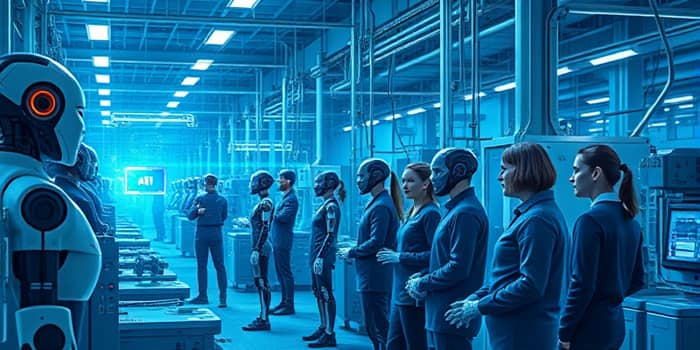
As we stand on the threshold of a new industrial era, automation technologies are accelerating change across every sector. Robotics and automation are not just buzzwords—they are driving a profound transformation in manufacturing, services, and knowledge work. From smart factories to AI-powered customer support, these innovations are redefining productivity, competitiveness, and the very nature of work.
In this article, we explore the market trends powering this shift, unpack the social and economic impact, highlight emerging technologies, and reveal where investors can find the smartest opportunities. We also address the challenges of implementation, the imperative of reskilling, and the ethical considerations that will shape a responsible future.
The global market for industrial robots reached an all-time high of $16.5 billion in 2025, with an astonishing 2.5 million industrial robots operating worldwide. Adoption is surging as companies seek to boost efficiency, quality, and flexibility. The rise of collaborative robots, or “cobots,” which comprised 11.6% of new installations in North America in Q1 2025, underscores a shift toward human-machine partnerships.
Robotics and AI have proven economic engines: from 1993 to 2016, automation contributed to 10% of GDP growth per capita in OECD nations. Looking ahead, experts forecast AI and robotics-driven automation could fuel 2% annual productivity growth over the next decade, reversing years of stagnation.
As more industries embrace automation, we see a direct correlation between robot adoption and productivity. A study found a 0.42 correlation between manufacturing robot density and output gains. Meanwhile, advanced AI is projected to generate $3.5 to $5.8 trillion in annual value—40% of all analytics-driven returns.
Innovation is proliferating across both physical and digital realms. Leading the charge are:
These breakthroughs enable companies of all sizes to deploy scalable automation without large capital expenditures. RaaS, in particular, is reshaping the business model, shifting robotics from capex to opex and lowering entry barriers.
Automation’s dual effects—job displacement and creation—are central to the debate. By 2030, it’s estimated that 92 million roles will be displaced while 170 million new positions emerge. This dynamic equates to a net global gain of 78 million jobs.
However, rapid change demands human adaptability. Nearly 44% of workers will require upskilling or reskilling within five years to stay relevant. Companies must invest in training, mentorship, and lifelong learning to ensure employees can collaborate effectively with machines.
Despite fears, many employees embrace automation: after implementation, 89% of finance staff and 95% of HR professionals report higher satisfaction and lower stress when tedious tasks are automated.
Investors are targeting firms that excel in mixed human-robot environments. Robotics-as-a-Service platforms, cobot manufacturers, and AI analytics providers are attracting capital as the market matures. Data shows that organizations leading in automation consistently outpace peers in productivity and profitability.
Generative AI and predictive workforce planning tools also represent high-value bets. These technologies not only automate tasks but create insights that drive strategic decisions, unlocking additional revenue streams.
Despite enormous potential, hurdles abound. Studies indicate that 70% of digital transformation initiatives fail to meet objectives, and 73% of automation projects miss their ROI targets. Key challenges include integration complexity, lack of change management, and treating automation as a narrow IT function.
Overcoming these obstacles requires executive sponsorship, cross-functional collaboration, and a clear vision that aligns technology with business strategy.
Trust, transparency, and inclusion are paramount as we integrate AI into daily operations. Rigorous oversight, human-in-the-loop models, and ethical frameworks help mitigate bias and protect privacy. Policymakers and industry leaders must collaborate to establish standards that ensure fair and responsible use.
Moreover, discussions around wage impacts, labor rights, and equitable access to reskilling resources are critical to achieving social acceptance and sustainable growth.
Looking ahead, robotics and automation will be recognized as general-purpose technologies, permeating all sectors from agriculture to healthcare. Supply chains will become more resilient as onshoring and advanced manufacturing frameworks take hold. Hybrid human-machine teams will become the norm, demanding novel skill sets in data interpretation, programming, and strategic oversight.
For investors, the smartest opportunities lie in platforms that integrate AI with robotics, in upskilling providers, and in companies pioneering ethical, scalable automation. Organizations that embrace continuous learning, foster collaboration across disciplines, and invest in responsible innovation will reap the greatest rewards.
In this era of rapid change, the intersection of robotics, AI, and human ingenuity offers an unparalleled chance to redefine work and unlock new value. By navigating challenges thoughtfully and investing wisely, we can shape a future where technology amplifies human potential and drives prosperity for all.
References













